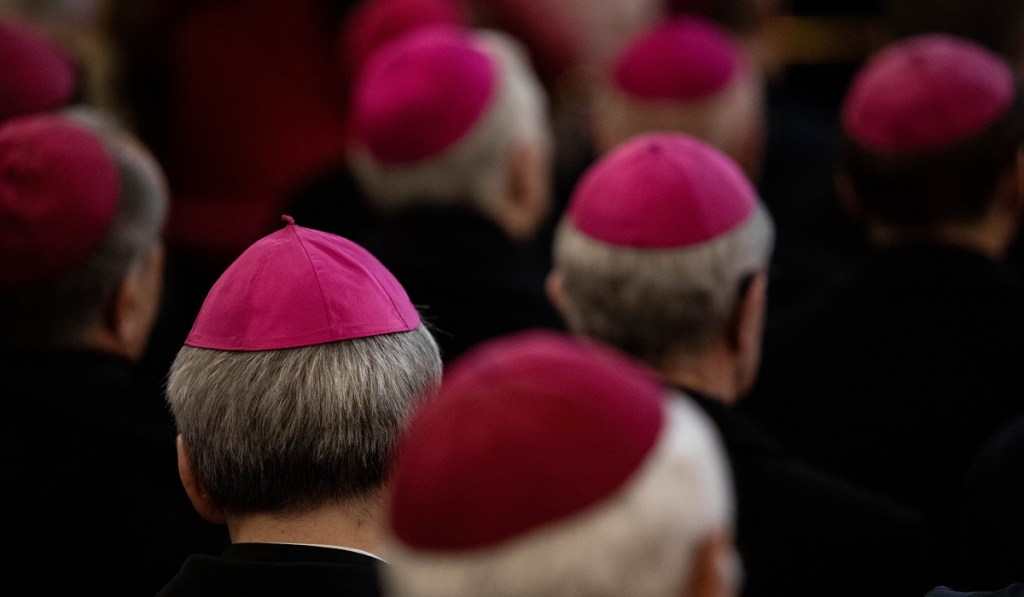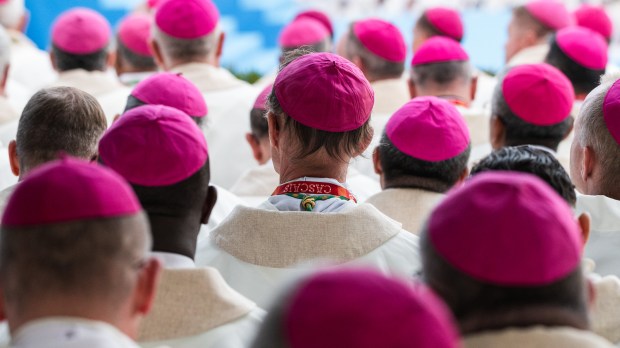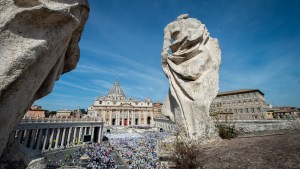The Dicastery for the Doctrine of the Faith is in the news a lot, but not everyone really knows what a “dicastery” is or what it does. To understand what we’re talking about, we need to take a look at the etymology of the term.
“Dicastery” comes from the Greek dikasterion, i.e. “court of justice,” derived from δίκη, pronounced DEE-keh, which means “right” or “justice.”
Today, a dicastery means a department of the Roman Curia, the set of Vatican administrative institutions that assist a pope in the government of the Catholic Church.
Dicastery: an administrative entity
According to Pastor Bonus, an apostolic exhortation which Pope John Paul II issued in 1988, reforming the structure of the Curia:
Article 2, § 1. By the word “dicasteries” are understood the Secretariat of State, Congregations, Tribunals, Councils and Offices, namely the Apostolic Camera, the Administration of the Patrimony of the Apostolic See, and the Prefecture for the Economic Affairs of the Holy See.
§ 2. The dicasteries are juridically equal among themselves.
John Paul II referred to the institution of dicasteries in the introduction to the same document:
It was our predecessor Sixtus V who gave the Roman Curia its formal organization through the above-quoted Apostolic Constitution Immensa æterni Dei, on 22 January 1588 […] He set up fifteen dicasteries, so that the single College of Cardinals would be replaced by several colleges consisting of certain cardinals whose authority would be confined to a clearly defined field and to a definite subject matter. In this way, the Supreme Pontiffs could enjoy maximum benefit from these collegial counsels.

As far as their structure goes, Pope Francis’ 2022 Apostolic Constitution Praedicate Evangelium says:
§1. Each curial institution has a Prefect, or equivalent, an adequate number of members, including one or more Secretaries who assist the Prefect, together with, but subordinately, one or more Undersecretaries, all of whom are assisted by various officials and consultors.
§2. Depending on its particular nature, or a special law, a curial institution can have a structure other than the one established in §1.
With the exception of the Secretary of State, who is appointed ad nutum Summi Pontificis (for as long as the Supreme Pontiff wills), the heads of the dicasteries are appointed by the pope for a five-year term.
United in their service of the Pope and the Church
Until 2022, although these entities were considered dicasteries, their official titles varied. Pope Francis, in the apostolic constitution Praedicate Evangelium, further reorganized the Curia and changed the official titles to use the term “dicastery” more uniformly. Thus, the Congregation for the Doctrine of the Faith, for example, became the Dicastery for the Doctrine of the Faith.
This was the continuation of a series of reorganizations and renamings; already in 2016, Pope Francis had combined the Pontifical Council for the Laity and the Pontifical Council for the Family under the title of the Dicastery for the Laity, Family and Life. Popes regularly adjust the organization of the Curia: The Pontifical Council for Promoting the New Evangelization was created by Benedict XVI in 2010. It now falls under the Dicastery for Evangelization.
In addition to the Secretariat of State, which is distinguished by not bearing the title of dicastery, there are currently 16 entities directly referred to as “dicasteries” within the Roman Curia, as listed in Praedicate Evangelium:
Dicastery for Evangelization
Dicastery for the Doctrine of the Faith
Dicastery for the Service of Charity
Dicastery for the Eastern Churches
Dicastery for Divine Worship and the Discipline of the Sacraments
Dicastery for the Causes of Saints
Dicastery for Bishops
Dicastery for Clergy
Dicastery for Institutes of Consecrated Life and Societies of Apostolic Life
Dicastery for the Laity, the Family and Life
Dicastery for Promoting Christian Unity
Dicastery for Interreligious Dialogue
Dicastery for Culture and Education
Dicastery for Promoting Integral Human Development
Dicastery for Legislative Texts
Dicastery for Communication
All of these dicasteries are “at the service of the Pope, the successor of Peter, and of the Bishops.” And, Predicate Evangelium specifies, they are to carry out their duties “with evangelical spirit, working for the good and service of communion, unity and the building up of the universal Church, while also attentive to the circumstances of the world in which the Church is called to carry out its mission.”



